The debate on the intersection of art and science has experienced a significant acceleration in recent years in exploring the aesthetic possibilities offered by emerging technologies, as evidenced, one example above all, by the section The Unfinished Body curated by Alessandra Troncone, the most convincing of the 18th Quadriennale d’arte di Roma that opened last October. Bringing together works by Italian artists born between the 1980s and 1990s around a reasoning on the evolution of the contemporary body, the selection has no doubts in predicting a future under the banner of indistinction between human and non-human and in noting the already current canonization of the symbiosis between science and art as an epochal form of updating creative making. Beyond the actual inclusion of new technological media in artists’ operational arsenals, the aesthetic, philosophical and epistemological implications of the most recent scientific discoveries have in recent years proved decisive in shaping worldviews in various ways marked by the canons of co-presence, infiniteness and uncontrollability suggested by the fallout, largely precluded from the scrutiny of our senses, of the theories from which they derive on our perception of the world.
The most interesting question that arises in art is thus not so much that of applying methodologies and processes elaborated within scientific and technological experimentation, but of the possibility of translating into sensible and aesthetically coherent experience the foundational insights of a Weltanschauung born from the ashes of outdated determinist thought. Many of the key concepts of such artistic expressions, such as the influence of the observer in changing the object of his or her attention, the simultaneity of multiple parallel realities and the interconnection between seemingly distant elements, entanglement in physics, are direct references to quantum mechanics, whose first centennial is being celebrated this year. Many important artists draw sap from these suggestions, such as Tomás Saraceno (San Miguel de Tucumán, 1973), whose “spider-web sculptures” represent systems in fragile equilibrium associated with string theory (a physical model according to which elementary particles are not points, but small vibrating strings) or Yuko Mohri (Kanagawa, 1980) currently the protagonist at Pirelli HangarBicocca of a prestigious exhibition entitled precisely Entanglements, evoking how all existence belongs to a system regulated by invisible bonds and interactions at a distance. Not to mention Pierre Huyghe (Paris, 1962), who last year in Venice for the Liminal exhibition had transformed the exhibition spaces of Punta della Dogana into a techno-ecosystem capable of evolving above and below the viewer’s perceptions thanks to the interaction between different forms of life, inanimate objects and technologies. However, even in the most forward-looking artistic practices, reference to quantum physics risks resolving itself into an epidermal seduction, which elides in conceptual and poetic suggestion the inquiry into the epistemological scope of scientific paradigms. The immersive installation We Felt A Star Dying by Laure Prouvost (Croix, 1978), presented at OGR Turin after its Berlin debut at the industrial spaces of Kraftwerk, does not evade this confrontation, indeed it is based on it, conceived as a rigorous and at the same time visionary attempt to materialize in a welcoming and responsive environment-body the interdependencies characterizing quantum systems. The project was born out of a two-year research journey that saw the artist team up with philosopher Tobias Rees and scientist Hartmut Neven, founder and director of the Google Quantum AI Lab in Santa Barbara, California, a campus born out of a collaboration between Google, NASA Ames Research Center and Universities Space Research Association, which specializes in the development of quantum computers and the optimization of artificial intelligence.
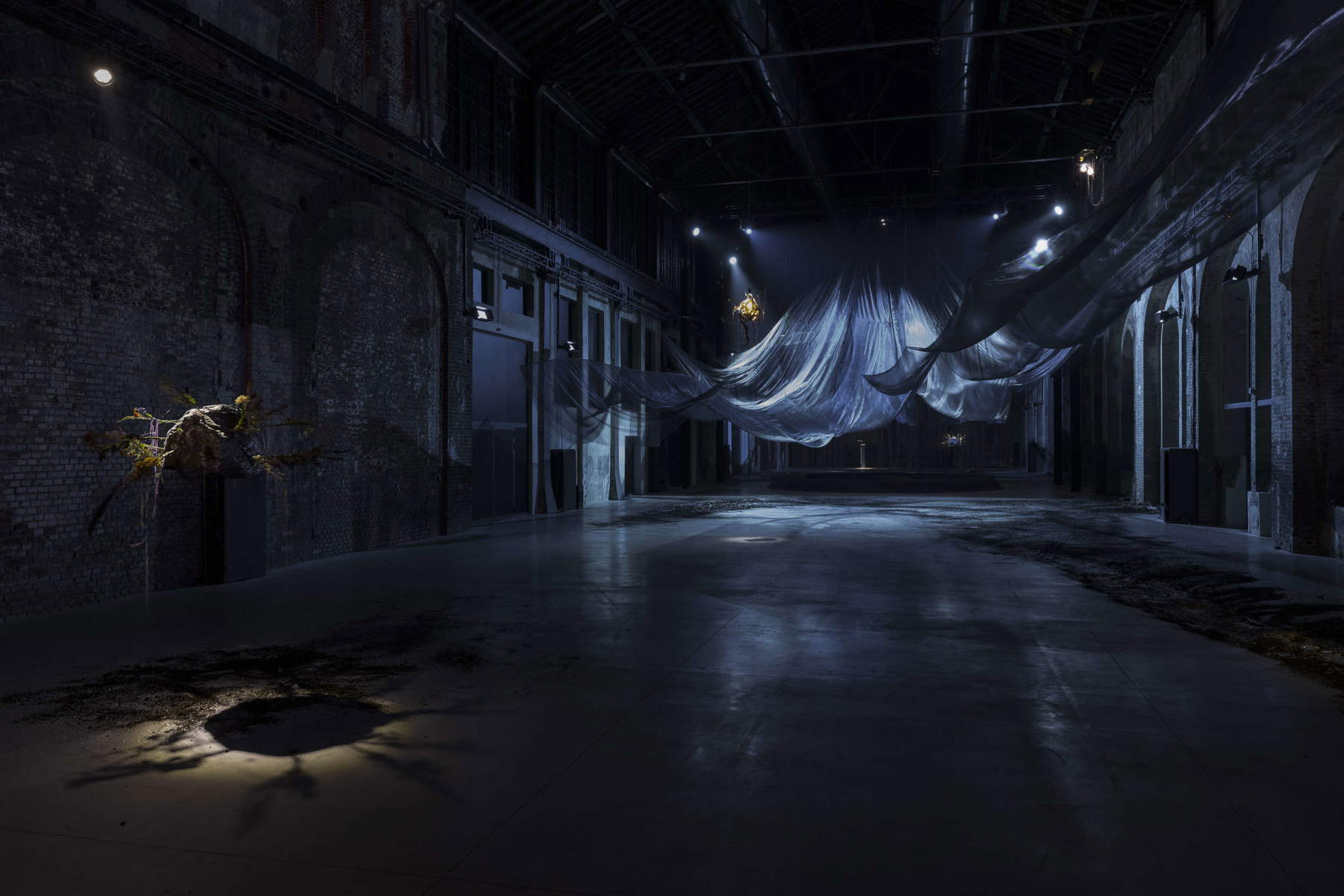
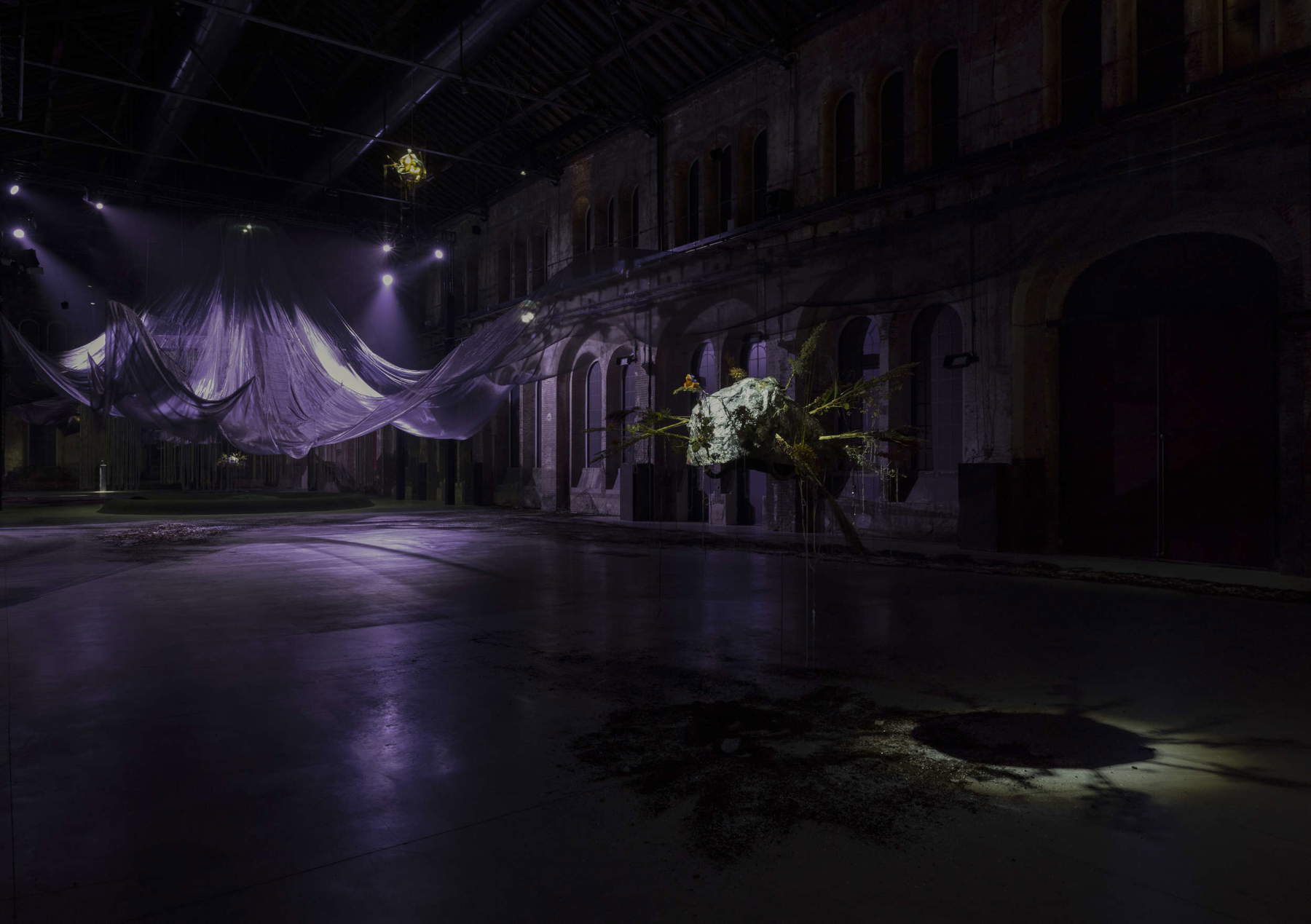
The French artist, whose practice has always been devoted to the construction of imaginary universes where logical normativity breaks down into metaphorical translations, narrative superimpositions, poetic epiphanies and hierarchical subversions, identifies the generative core of this project in theinsight that these futuristic computers, unlike the deterministic machines of the industrial age, contemplate unpredictability and instability not as flaws to be corrected but as ontological conditions of operation, radically challenging our notions (and possibilities) of control. The work unfolds in the monumental Binario 1 of the former Officine Grandi Riparazioni, whose mighty twentieth-century brick architecture emphasizes by contrast the ethereal delicacy of the products of contemporary manufactures. The installation transforms this industrial shell into a multisensory environment where videos, sounds, kinetic sculptures and olfactory solicitations intertwine in a persuasive invitation to unlearn the perceptual coordinates of everyday life and open up to an osmotic understanding.
At the center of the space immersed in darkness moves The Beginning, a kinetic sculpture equipped with five arms resembling tentacles or petals depending on the degree of unfolding, fragile and unpredictable in their hybrid morphology between organic growth and technological construction. Unlike the autistic industrial machines of the past, this sculptural presence vibrates with a sensibility of its own, autonomous even from the artist’s will: its thermal core registers the infinitesimal variations of heat in its surroundings, translating them into synchronies of intermittent movements that embody the essence of quantum systems where everything unfolds according to multiple and unexpected correlations. Such seemingly random choreography actually responds precisely to environmental stimuli imperceptible to human beings, such as the energy fluctuations and interference of cosmic rays that constantly pass through us without our awareness, making tangible how what we are accustomed to considering reality, in the artist’s vision, is only a limited portion of the infinities existing beyond the boundary of our ordinary sensory perceptions. Instead, the suspended sculptures of the Cute Bits series, a title playful in its assonance with qubits, fundamental units of quantum information, embody the principle ofentanglement through rhythmic specular oscillations that connect them even when they appear physically distant, materializing that mysterious phenomenon whereby intertwined particles maintain instantaneous correlations regardless of the distance that separates them. These heterogeneous conglomerates, suspended and floating in an indeterminate space, evoke at once stellar debris and fragments of obsolete machinery, in an imaginative amalgam of earth and sky, organic matter and mineral. Approaching with the caution one would reserve for a feral being, one smells metallic scents mingled with whispered voices, at the mercy of which intellectual understanding is converted into bodily synchronization.
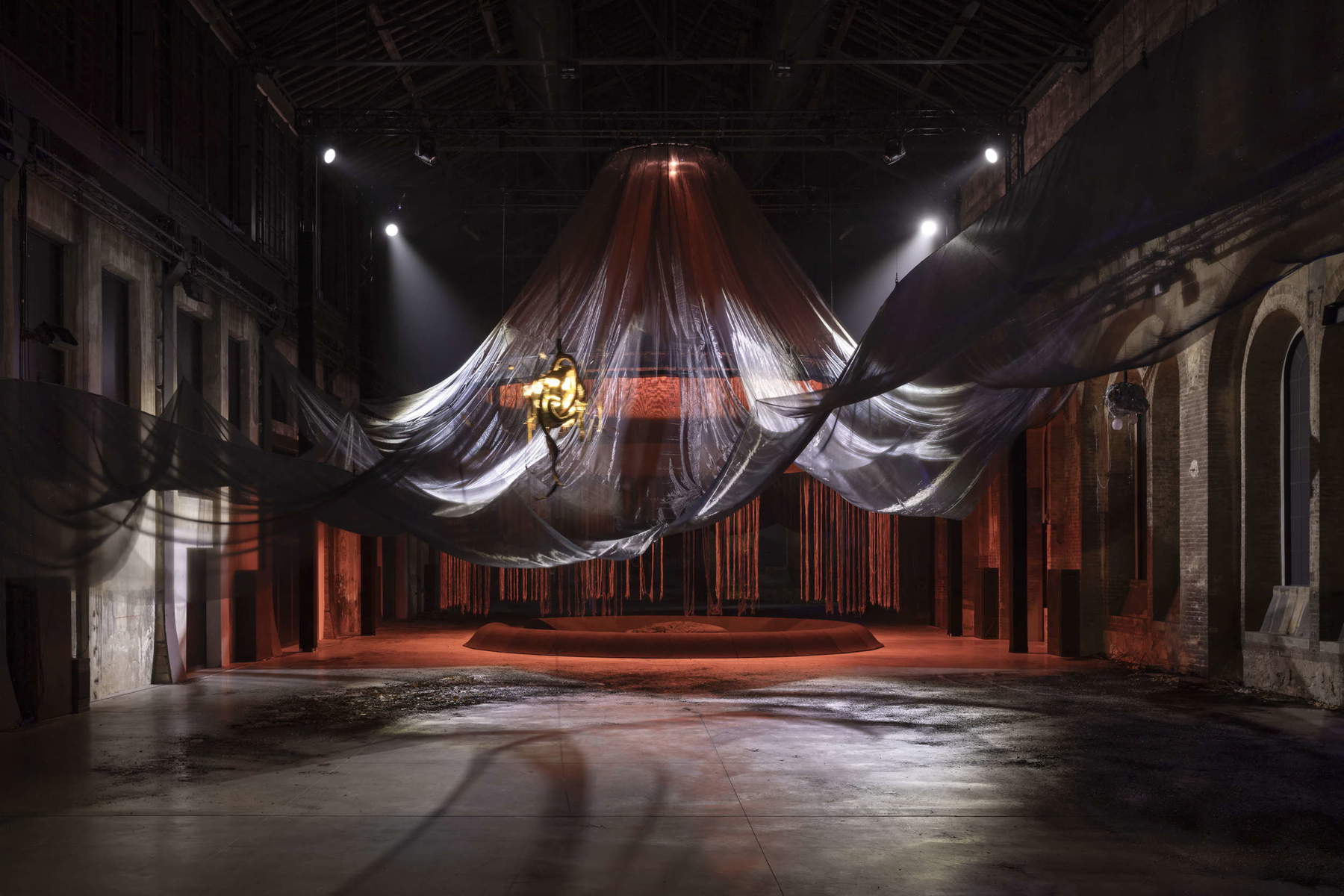
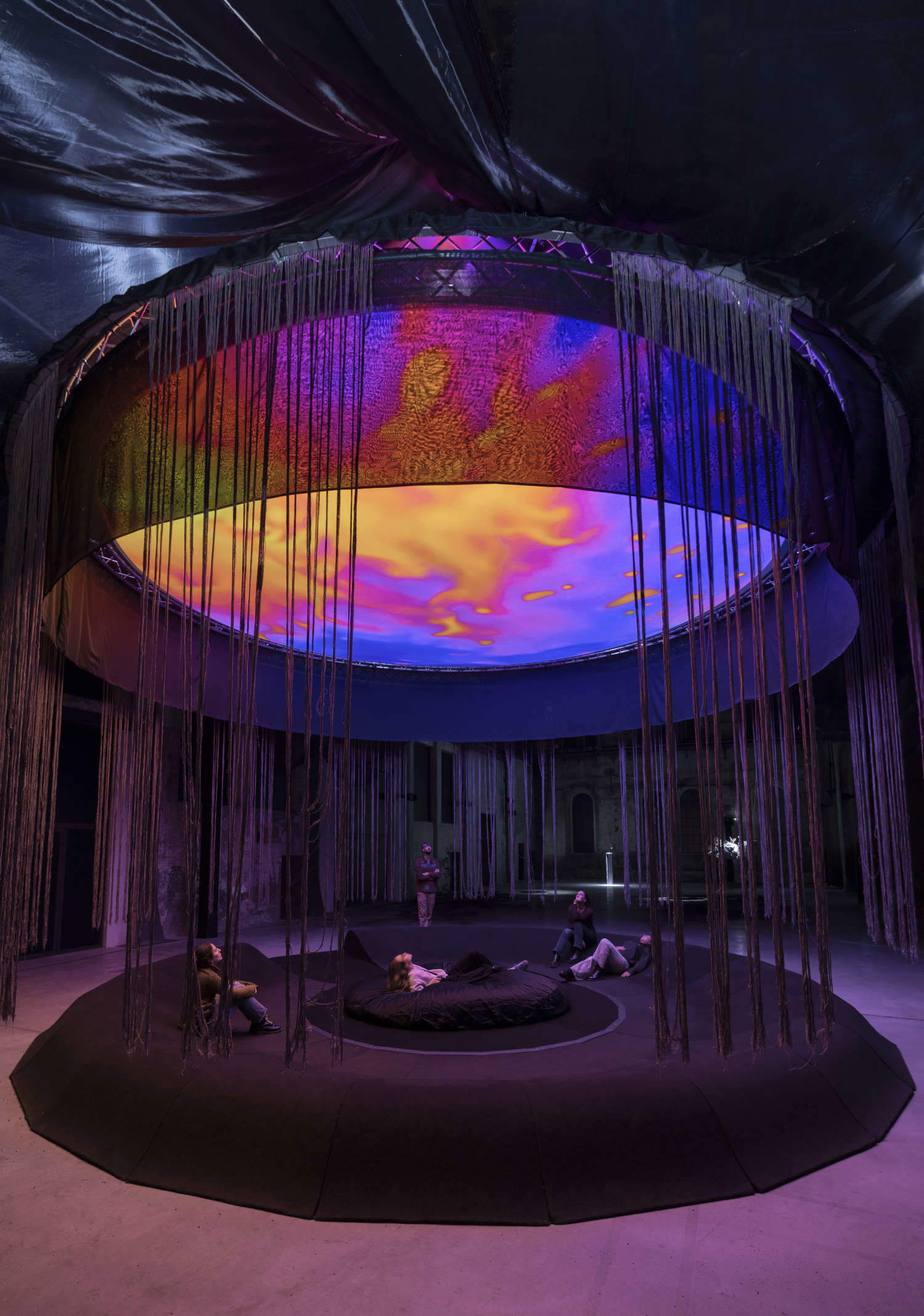
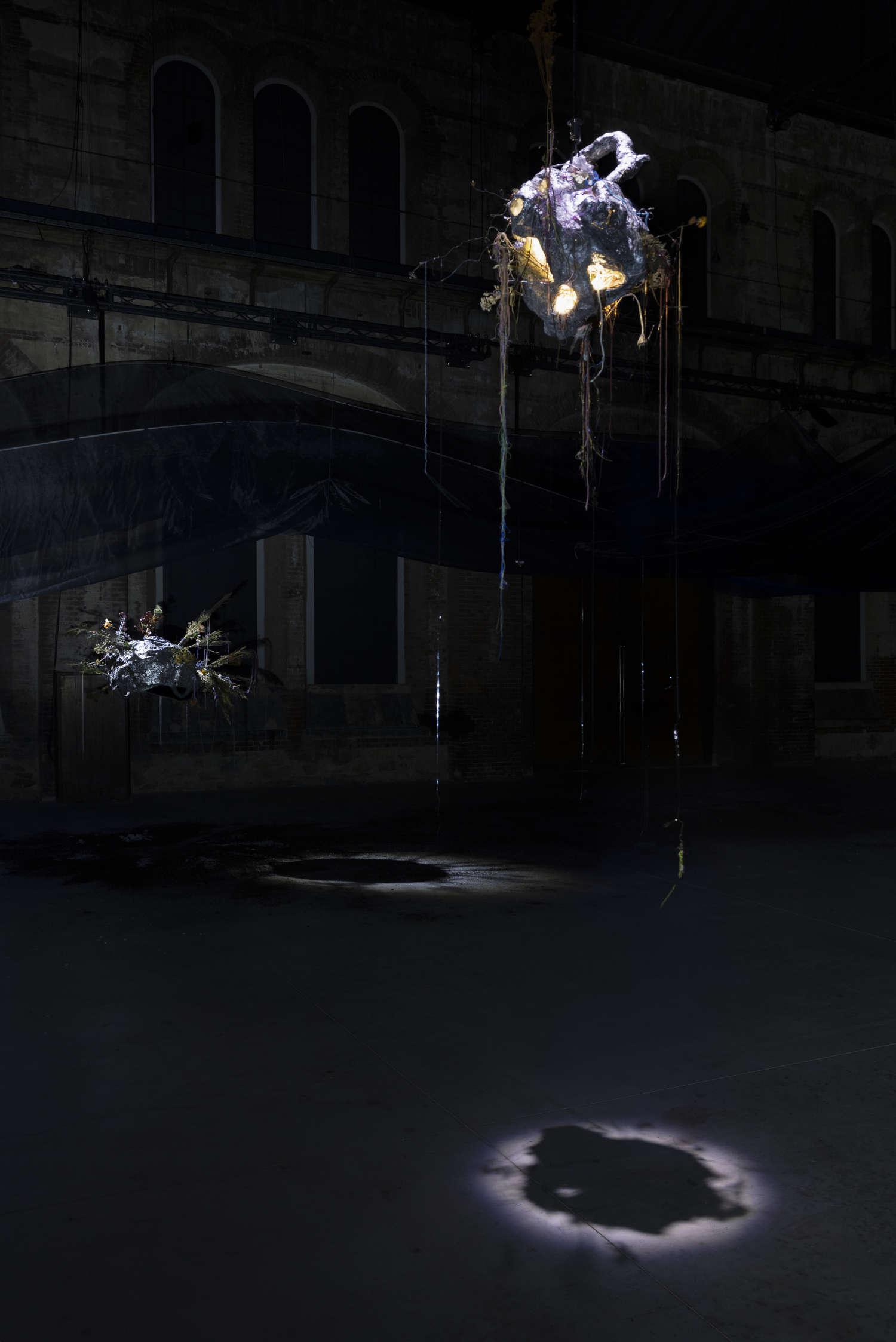
On this base is grafted the heart of the setting, a flow of metamorphic images of a reality that eludes all representational stability. The video We Felt a Star Dying, protected by a breathable canopy of veils that lower until their invisible fringed extensions graze your face, is viewed while lying down, in a vulnerable posture that evokes the ancestral act of peering into the cosmos. It is composed of footage captured through microscopes, drones and thermal cameras intersected with quantum computer-processed images that dissolve and recompose under the effect of ambient noise. Cosmic rays, heat fluctuations and magnetic fields affect the work in the same way they interfere with the operation of real quantum machines, generating an oscillating state between synchronicity and disintegration, between appearance and disappearance, an echo of a universe in perpetual palpitation. The concept of noise, which in classical physics is regarded as a disturbance to be eliminated in order to ensure the accuracy of measurements, here becomes a generative principle and a new multiple subjectivity as a non-human agency interfering with the image and video montage. The soundtrack, created by KUKII, blends devotional songs from different spiritual traditions of the world with choruses written by Prouvost and Paul Buck. The artist identifies music as the closest sensory experience to the quantum dimension, as sound passes through us causing us to vibrate in unison with frequencies beyond our consciousness, in an osmosis between rational understanding and sensory immersion. Theartificial intelligence used in the project, trained on data manipulated by quantum phenomena, was used here to replicate in the video the same kind of interference caused by radiation that at times disturbed computer operation during work sessions at the Google Quantum AI Lab.
The title of the exhibition, We Felt a Star Dying, alludes precisely to the explosion of a dying star millions of light-years away, a cosmic radiation imperceptible to us, but capable of destabilizing the quantum machinery’s calculations like a storm. This constitutive vulnerability becomes in the artist’s hands an opportunity to reconfigure the imaginable, as well as a tangible demonstration of these machines’ connection to an articulated cosmic system where each element is hooked to multiple invisible but operative force fields. Insisting on an elusive crossroads between art, philosophy and physics, the exhibition is configured as an experience of a visual and sensory grammar calibrated on pre- or post-logical perception. If, as philosopher Tobias Rees argues, quantum processes enfranchise us from the binary oppositions that have structured Western thought in recent centuries, Prouvost embraces this epistemological liberation and makes it traversable, transforming space into an incubator of presences where the dawn of a new technological age paradoxically coincides with the recovery of archaic sensibilities. The poetic transfiguration operated by the artist relocates aesthetic experience to the center of understanding the world, restoring to art the function of a tool capable of generating alternative knowledge to functional rationality without subordinating theoretical rigor to perceptual hedonism.
Warning: the translation into English of the original Italian article was created using automatic tools. We undertake to review all articles, but we do not guarantee the total absence of inaccuracies in the translation due to the program. You can find the original by clicking on the ITA button. If you find any mistake,please contact us.